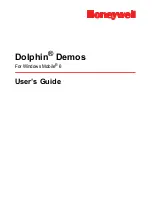
Portal Design Approach
80
Portal Server 6 2005Q1 • Deployment Planning Guide
Your high-level portal design communicates the architecture of the system and
provides the basis for the low-level design of your solution. Further, the high-level
design needs to describe a logical architecture that meets the business and technical
needs that you previously established. The logical architecture is broken down
according to the various applications that comprise the system as a whole and the
way in which users interact with it. In general, the logical architecture includes
Portal Server Secure Remote Access (SRA) , high availability, security (including
Access Manager, and Directory Server architectural components. See
“Logical
Portal Architecture” on page 81
for more information.
The high- and low-level designs also need to account for any factors beyond the
control of the portal, including your network, hardware failures, and improper
channel design.
Once developed, the high-level design leads toward the creation of the low-level
design. The low-level design specifies such items as the physical architecture,
network infrastucture, Portal Desktop channel and container design and the actual
hardware and software components. Once you have completed the high- and
low-level designs, you can begin a trial deployment for testing within your
organization.
Overview of High-Level Portal Design
The high-level design is your first iteration of an architecture approach to support
both the business and technical requirements. The high-level design addresses
questions such as:
•
Does the proposed architecture support both the business and technical
requirements?
•
Can any modifications strengthen this design?
•
Are there alternative architectures that might accomplish this?
•
What is the physical layout of the system?
•
What is the mapping of various components and connectivity?
•
What is the logical definition describing the different categories of users and
the systems and applications users have access to?
•
Does the design account for adding more hardware to the system as required
by the increase in web traffic over time?
Содержание Portal Server 6 2005Q1
Страница 8: ...8 Portal Server 6 2005Q1 Deployment Planning Guide...
Страница 10: ...10 Portal Server 6 2005Q1 Deployment Planning Guide...
Страница 12: ...12 Portal Server 6 2005Q1 Deployment Planning Guide...
Страница 20: ...Sun Welcomes Your Comments 20 Portal Server Secure Remote Access 6 2005Q1 Administration Guide...
Страница 36: ...A Typical Portal Server Installation 36 Portal Server 6 2005Q1 Deployment Planning Guide...
Страница 50: ...Proxylet 50 Portal Server 6 2005Q1 Deployment Planning Guide...
Страница 78: ...SRA Sizing 78 Portal Server 6 2005Q1 Deployment Planning Guide...
Страница 132: ...Identity and Directory Structure Design 132 Portal Server 6 2005Q1 Deployment Planning Guide...
Страница 142: ...Configuration Files 142 Portal Server 6 2005Q1 Deployment Planning Guide...
Страница 152: ...Tuning Parameters for etc system 152 Portal Server 6 2005Q1 Deployment Planning Guide...
Страница 158: ...Portal Server on an Application Server Cluster 158 Portal Server 6 2005Q1 Deployment Planning Guide...
Страница 178: ...Portal Design Task List 178 Portal Server 6 2005Q1 Deployment Planning Guide...
Страница 180: ...Comparison of Solaris and Linux Path Names 180 Portal Server 6 2005Q1 Deployment Planning Guide...
Страница 182: ...182 Portal Server 6 2005Q1 Deployment Planning Guide...
Страница 192: ...Section X 192 Portal Server 6 2005Q1 Deployment Planning Guide...















































